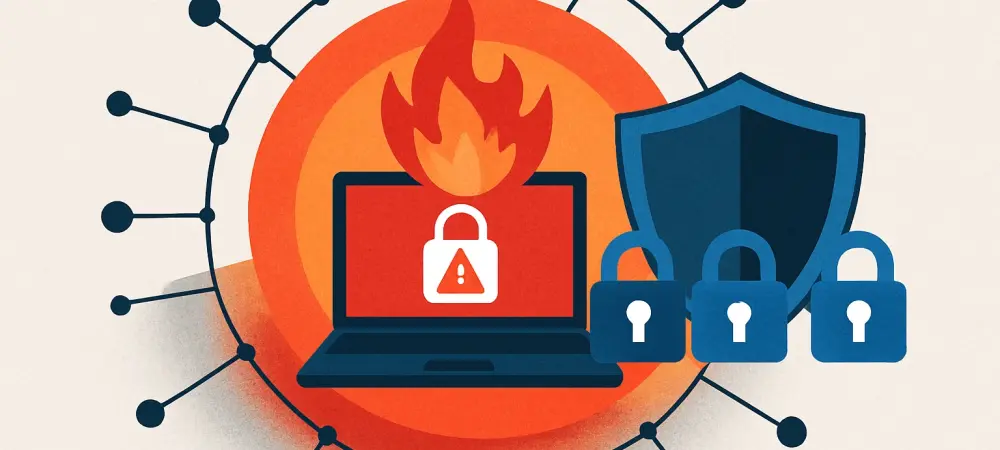Setting the Stage: The Urgency of Cyber Containment in 2025
In an era where digital transformation drives every sector, the cybersecurity market faces an unprecedented challenge: the average cost of a data breach has soared to millions of dollars, with attackers often lingering undetected within networks for months. This alarming reality underscores a pivotal shift in the industry—moving beyond mere prevention to containing the damage once a breach occurs. As organizations grapple with increasingly sophisticated threats, the focus on limiting the “blast radius” of cyber attacks has become a critical market driver. This analysis examines the current state of cybersecurity strategies, highlighting gaps in traditional approaches and exploring emerging trends that promise to reshape how businesses mitigate risks. By delving into market dynamics and projections, the goal is to provide actionable insights for stakeholders aiming to fortify defenses in an ever-evolving threat landscape.
Unpacking Market Trends: Challenges and Opportunities in Cybersecurity
Data Deluge: A Barrier to Effective Threat Management
The cybersecurity market in 2025 is characterized by an overwhelming influx of data that security teams must navigate daily. Organizations across industries collect extensive logs and monitor complex hybrid communications, including east-west traffic within networks. However, the lack of contextual interpretation turns this abundance into a liability, creating a paradox where more data equates to less visibility. Security operations are inundated with thousands of alerts, many proving to be false positives, which drain resources and lead to critical oversights. This inefficiency not only strains budgets but also results in substantial financial losses when attacks remain hidden, allowing threat actors to expand their foothold. The market demand for solutions that transform raw telemetry into meaningful insights is surging, as companies seek to cut through the noise and prioritize actionable intelligence.
Tool Saturation: Fragmentation Undermines Defense Strategies
Another defining trend in the cybersecurity sector is the proliferation of detection tools, a phenomenon echoing challenges from earlier market cycles. Businesses have widely adopted platforms like Cloud Detection and Response (CDR), Network Detection and Response (NDR), and Extended Detection and Response (XDR), alongside systems such as Security Information and Event Management (SIEM). Despite this investment, the market reveals a persistent issue: fragmented tools generate disparate alerts without correlation, leading to operational silos and reduced clarity. This saturation mirrors historical struggles with endpoint detection, where adding more dashboards failed to deliver cohesive outcomes. As a result, attackers exploit these gaps, navigating through systems with relative ease. The industry is witnessing a growing push for unified platforms that integrate data and provide context, signaling a critical need for vendors to address interoperability in their offerings.
Lateral Movement: The Hidden Market Risk
A significant yet often under-addressed risk in the cybersecurity market is the inability to curb lateral movement post-breach. While prevention and early detection remain focal points, the real damage occurs when attackers spread unchecked across cloud and data center environments. This vulnerability stems from a lack of observability—understanding the who, what, where, and criticality of an incident in real time. Many organizations struggle to visualize potential attack paths or assess the scope of an incident’s impact, leaving them reactive rather than proactive. Market analysis indicates that hybrid infrastructures exacerbate these blind spots, creating opportunities for attackers to escalate threats. The demand for solutions emphasizing segmentation and rapid response is on the rise, as businesses recognize that containment is key to minimizing widespread harm in an increasingly complex digital ecosystem.
Future Projections: Shaping the Next Era of Cyber Defense
Looking ahead from 2025 to 2027, the cybersecurity market is poised for transformative growth, driven by advancements in artificial intelligence (AI) and machine learning (ML). These technologies are expected to enhance detection and response capabilities, particularly in cloud environments, where threats are most dynamic. Industry trends point toward the rise of autonomous Security Operations Centers (SOCs), with organizations prioritizing fewer raw alerts in favor of enriched, context-driven insights that enable preemptive action. However, the dual-edged nature of AI introduces a competitive tension—while defenders leverage it for faster threat identification, attackers may exploit it to craft more evasive tactics. Regulatory frameworks are also projected to tighten, compelling vendors to integrate stricter containment features into their solutions. Market forecasts suggest that success will hinge on the ability to convert visibility into actionable containment, with segmentation and automated response mechanisms likely to dominate innovation pipelines.
Reflecting on Insights: Strategic Pathways for Market Players
This analysis of the cybersecurity market in 2025 reveals critical gaps in traditional defense strategies, from data overload to tool fragmentation and the persistent threat of lateral movement. The examination of current trends highlights how an over-reliance on detection without containment leaves organizations vulnerable to escalating damages. Looking back, the market’s trajectory shows a clear shift toward observability and rapid response as defining factors in mitigating cyber risks. For stakeholders, the path forward involves investing in platforms that prioritize contextual insights over raw data, alongside implementing environmental segmentation to block attacker pathways. Additionally, adopting zero-trust architectures emerges as a vital strategy to reduce vulnerabilities. As the industry evolves, those who focus on clarity, speed, and integration will position themselves to not only address immediate threats but also anticipate future challenges in an increasingly interconnected digital landscape.

